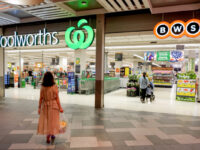
The UK’s food and grocery industry is predicted to grow by £24.1 billion (AU$44bn) by 2024, bringing the total market value to £217.7 billion (AU$399bn), according to forecasts from IGD.
The 12.5 per cent surge will be helped by online, which will be the fastest growing channel, followed by discounters, with both areas contributing nearly two-thirds of this growth.
“Growth in the online channel will come from a number of directions,” Simon Wainwright director of insight at IGD said.
“Firstly, newer players are entering the space such as Amazon and meal box operators such as Hello Fresh, Gousto and Mindful Chef. Faster and more convenient options to shop for groceries online are being introduced, such as Sainsbury’s, Ocado and Amazon all offering orders within an hour and widening the availability of delivery. More sophisticated analytics are also helping to strengthen customer loyalty.”
IGD found that saving time was a key element for online shoppers, with a saving of 23 minutes on average on the main food shop online as opposed to a large store.
Large stores, including supermarkets and hypermarkets, will account for half of the market in 2024. With perceptions of discounters like Aldi and Lidl changing, Wainwright said their market share will continue to grow rapidly.
“With many food discount shoppers now perceiving Aldi and Lidl as supermarkets rather than discounters, and more targeted investments in categories such as fresh produce, meat, bakery and beauty, the channel will continue to experience notable growth,” he said.
Food shoppers reported discounters as providing “good value, time saving and concise range”.
Aldi is on track to open 1,200 stores by 2025 and Lidl is upping store openings to 50-60 per year. Tesco’s discount model Jack’s will also support growth, but only as a marginal player with nine stores currently.
The convenience channel will deliver the second biggest gain in sales as retailers update their stores to meet the demand for smaller and more frequent shopping trips.
“Younger shoppers are more predisposed to shopping at convenience stores than older shoppers. Having grown up in the era of ‘new convenience’, offering wider ranges, longer opening hours and supermarket quality, younger generations will be key to driving ongoing growth, but they do have high expectations,” Wainwright said.
Convenience formats and ranges will become increasingly tailored to local demographics to engage shoppers more effectively, something both Coles and Woolworths plan to do more of in the future.
Large store openings are slowing but there’s significant investment in upgrading existing stores, making them relevant for changing shopper needs.
“Over the next five years we’ll see these retailers investing more in how they can improve the shopper experience at existing stores over introducing new sites, with key trends including easier in-store navigation for shoppers conducting smaller shops and introducing more foodservice and concessions.”
To remain relevant to shoppers, larger stores will focus on product innovation, brand partnerships, local sourcing and offering new services, to compete with the discounters.
















